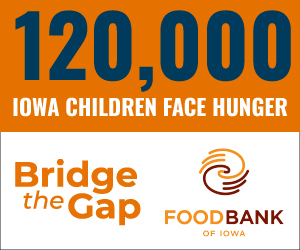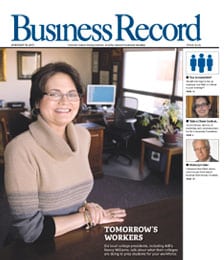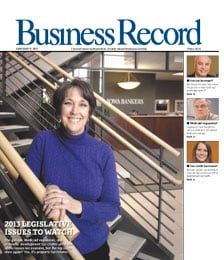The season of giving?

.floatimg-left-hort { float:left; } .floatimg-left-caption-hort { float:left; margin-bottom:10px; width:300px; margin-right:10px; clear:left;} .floatimg-left-vert { float:left; margin-top:10px; margin-right:15px; width:200px;} .floatimg-left-caption-vert { float:left; margin-right:10px; margin-bottom:10px; font-size: 12px; width:200px;} .floatimg-right-hort { float:right; margin-top:10px; margin-left:10px; margin-bottom:10px; width: 300px;} .floatimg-right-caption-hort { float:left; margin-right:10px; margin-bottom:10px; width: 300px; font-size: 12px; } .floatimg-right-vert { float:right; margin-top:10px; margin-left:10px; margin-bottom:10px; width: 200px;} .floatimg-right-caption-vert { float:left; margin-right:10px; margin-bottom:10px; width: 200px; font-size: 12px; } .floatimgright-sidebar { float:right; margin-top:10px; margin-left:10px; margin-bottom:10px; width: 200px; border-top-style: double; border-top-color: black; border-bottom-style: double; border-bottom-color: black;} .floatimgright-sidebar p { line-height: 115%; text-indent: 10px; } .floatimgright-sidebar h4 { font-variant:small-caps; } .pullquote { float:right; margin-top:10px; margin-left:10px; margin-bottom:10px; width: 150px; background: url(http://www.dmbusinessdaily.com/DAILY/editorial/extras/closequote.gif) no-repeat bottom right !important ; line-height: 150%; font-size: 125%; border-top: 1px solid; border-bottom: 1px solid;} .floatvidleft { float:left; margin-bottom:10px; width:325px; margin-right:10px; clear:left;} .floatvidright { float:right; margin-bottom:10px; width:325px; margin-right:10px; clear:left;}
Twas the season of giving … and while companies announced major job cuts, the stock market crashed and consumers cut back on spending this fall, United Way of Central Iowa’s annual fund-raising campaign received record contributions, the Greater Des Moines Community Foundation received its first land donation and Iowa Legal Aid formed a foundation to start raising money.
“We haven’t seen drastic changes in people being generous in Iowa at this point,” said Donald Doudna, a business and financial consultant with the Charitable Giving Resource Center in West Des Moines, who noted he still receives calls daily from people looking to give items to charity. “We’ve got to be smart. Like any other business, you’ve got to think about it, but we haven’t seen drastic modification in people’s giving.”
However, concern remains over how charities can handle a dramatic increase in demand for their services and whether people will be as generous in 2009.
Local corporate foundations especially could see a leveling off in the amount they will have available to give away, despite the potential for a huge year in capital campaigns. This echoes a national trend. In 2007, corporate giving totaled $10.97 billion, up from $10.2 billion in 2006, according to The Conference Board, which also projects a slight increase in charitable giving in 2008.
Charities in need
In December, Iowa Legal Aid announced the formation of the Iowa Legal Aid Foundation. The move was designed to increase private funding, which currently makes up only 10 percent of the organization’s revenues, and to better handle an increase in demand for services as more people face legal problems related to natural disaster recovery, foreclosures and domestic violence. In 2007, the organization turned away or underserved 12,000 people.
Though the foundation was formed before the economic downturn, its mission has become more critical as state and federal governments look for ways to cut spending during a recession. The goal, said Iowa Legal Aid Executive Director Dennis Groenenboom, is to “try to build an endowment to ease the ups and downs of other funding, to make sure in hard economic times, when other funding isn’t available, that we are able to serve people in need.”
A few years ago, Iowa Legal Aid lost about a half-million dollars in annual funding when the federal government adjusted its levels based on 2000 census figures.
The foundation board still needs to work through its fund-raising strategies and goals, but Groenenboom said it still plans to move forward despite tough times.
The Salvation Army in Des Moines also has seen a significant increase in demand for its services. The number of families that signed up for Christmas assistance this year was up nearly 400 people and its food pantries are handling about twice as much traffic as last year, said Arvid Huisman, development director for the Salvation Army in Des Moines.
However, the organization’s goal in its annual Red Kettle campaign is to raise $600,000, slightly less than last year’s goal of $681,000. As of Dec. 23, the tally was slightly ahead of last year’s campaign, but still 13 percent below the goal. Huisman said the previous campaign finished strong with its direct-mail component; this year’s campaign ends on Jan. 15.
“People ask me if I’m optimistic,” he said. “I say, ‘I’m cautiously optimistic.'”
Just making its $600,000 goal may not be enough to keep up with demand. In January, Salvation Army executives in the Midwest will meet in Chicago to discuss what to do to meet demand if revenues are lower this year.
United Way of Central Iowa could face a similar situation. Though it inched past its previous record of $25 million in its annual fund-raising campaign, demand for its services has grown, especially on the human services side.
“We certainly are already taking a look at expenses and things like that,” said United Way President Shannon Cofield. “It’s a little early to tell what the impact (will be).”
Still, Cofield is pleased with the results of the campaign, even though the total was less than United Way’s $26.25 million initial goal; it also breaks the organization’s recent trend of double-digit year-over-year growth.
“We could not have anticipated nearly what we’re facing through the midst of September/October,” Cofield said, “and that being said, having experienced that on top of probably donor fatigue from the floods and the high food and gas prices at the peak of it in August, all that being said, we are thrilled that we raised more than we did last year.”
The results are better than those of many other United Way campaigns, which are extending campaign deadlines, she said. She added that this chapter tried to focus its message on ways people’s donations are helping others now, on top of the new national campaign, “Live United,” which seemed to generate excitement.
Businesses respond
2009 could be an especially busy year for capital campaigns, according to community relations director Libby Jacobs and community investment consultant Andrew Allen of the Principal Financial Group Foundation Inc. Though the foundation has not seen a significant increase in grant requests, the dollar amounts charities are requesting have risen. It also is receiving more requests for sponsorships.
Principal and its foundation gave $11 million last year through grants and an employee matching-gifts fund, but the budget could be tighter this year. This has caused the company to change its strategy, re-evaluate its sponsorships, and look for new ways to help nonprofits.
“We’re really trying to be a little more thoughtful in how we make grants and how we do things,” Jacobs said. “A larger percent of our charitable giving is going to be driven by the employees’ matching-gift fund. It gets back to the organizations they’re interested in.” The foundation also is looking at ways to better utilize the eight hours of paid volunteer time off Principal employees receive each year, such as encouraging people to help out in the office of a nonprofit that is short-staffed.
The West Bancorporation Foundation Inc. has seen a significant increase in applicants applying for grants, said Executive Director Jill Hansen, but she doesn’t know whether that is due to a greater need from charities or more visibility for the foundation.
“We know the community need is certainly not decreasing and is even increasing as other sources dry up,” Hansen said. The parent company, West Bancorporation Inc., has not made a decision on its foundation budget for next year, but Hansen believes it will at least try to meet last year’s level.
Still, the increase in demand has made the foundation board take a closer look at where it allocates its money. “We haven’t been able to fund as many new requests as we would like,” Hansen said.
Surviving the downturn
J. Barry Griswell, president of the Greater Des Moines Community Foundation, was encouraged by United Way’s record campaign and believes people continue to give during tough economic times. “I really believe people do know that those who are in need and those hurting most are really being affected,” he said, “and I think it all makes people want to dig down deep and give as much as they can to those less fortunate.”
But, he added, people are a “bit cautious and re-evaluating exactly where they are personally.”
Doudna of the Charitable Giving Resource Center agrees that donors tend to become more passionate during difficult times and said charities have to appeal to that passion in order to continue raising funds. “I think the key thing is staying in touch with donors – understanding how passionate donors are, asking good questions, getting them more and more committed to the mission of the nonprofit,” Doudna said.
The fact that Iowa’s unemployment rate is only at 4.3 percent means people are still working and have money, Doudna said, and those in the 25-to-45 and over-70 age ranges are not as affected by the economic downturn as people nearing retirement.
However, Griswell and Doudna said the way people give gifts could change. Doudna said the two most popular gifts right now are land and gifted annuities, rather than stocks and bonds, which have been hit by the economic downturn. Griswell said the Community Foundation could see a shift to other investments, such as property. It recently received its first land donation, a century farm in Madrid.
The nonprofits most affected by a recession, Doudna said, will likely be small charities, because they tend not to have a lot of money in reserves. “I think many of them, unfortunately, are relying upon their boards, and their boards are giving them bad advice in part because boards tend to manage money ineffectively,” he said.
Doudna expects some nonprofits with similar missions could merge this year.
Still, he remains optimistic: “Run effectively, take care of your donors, tell your story, and you’ll be OK.”








